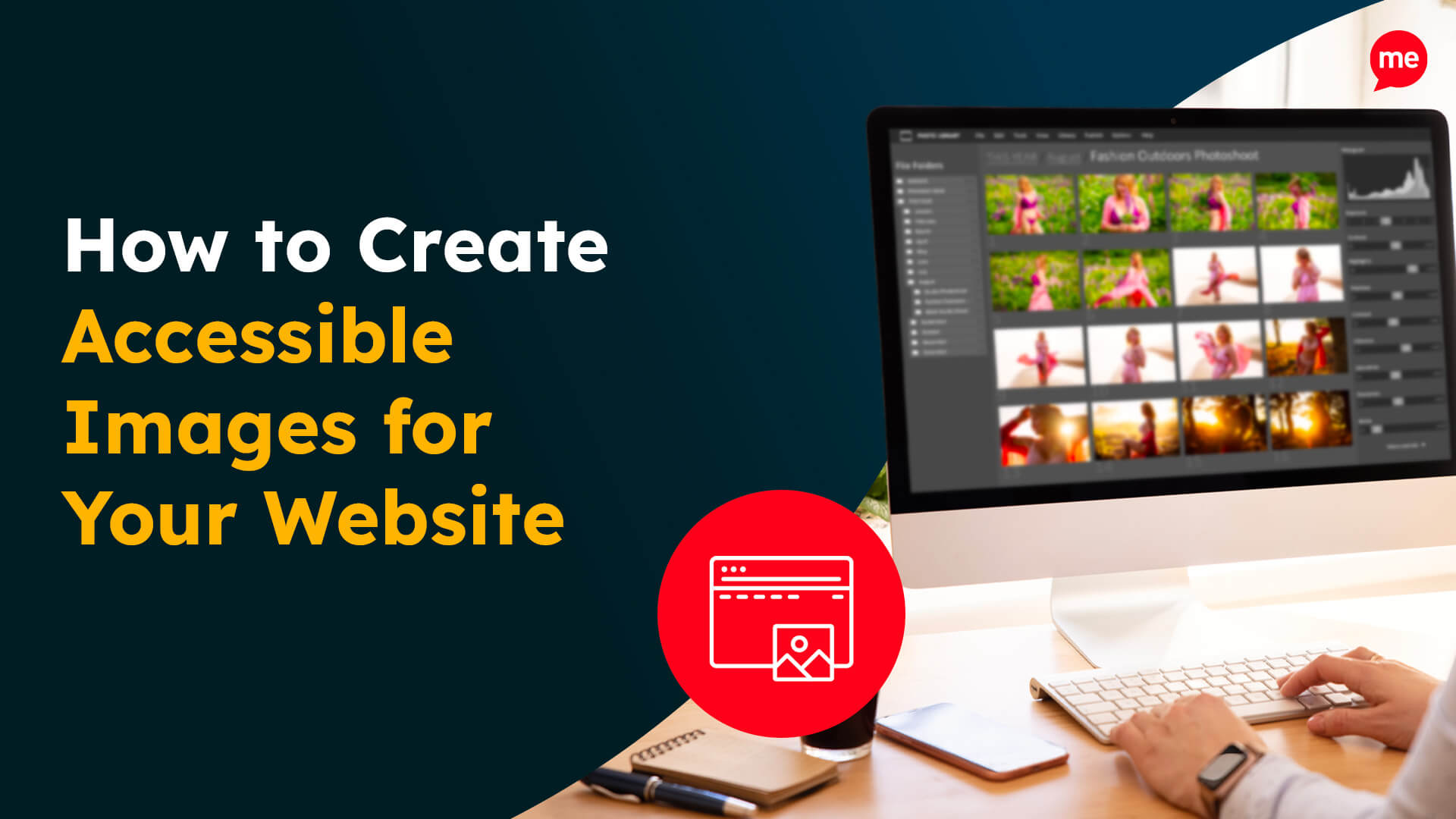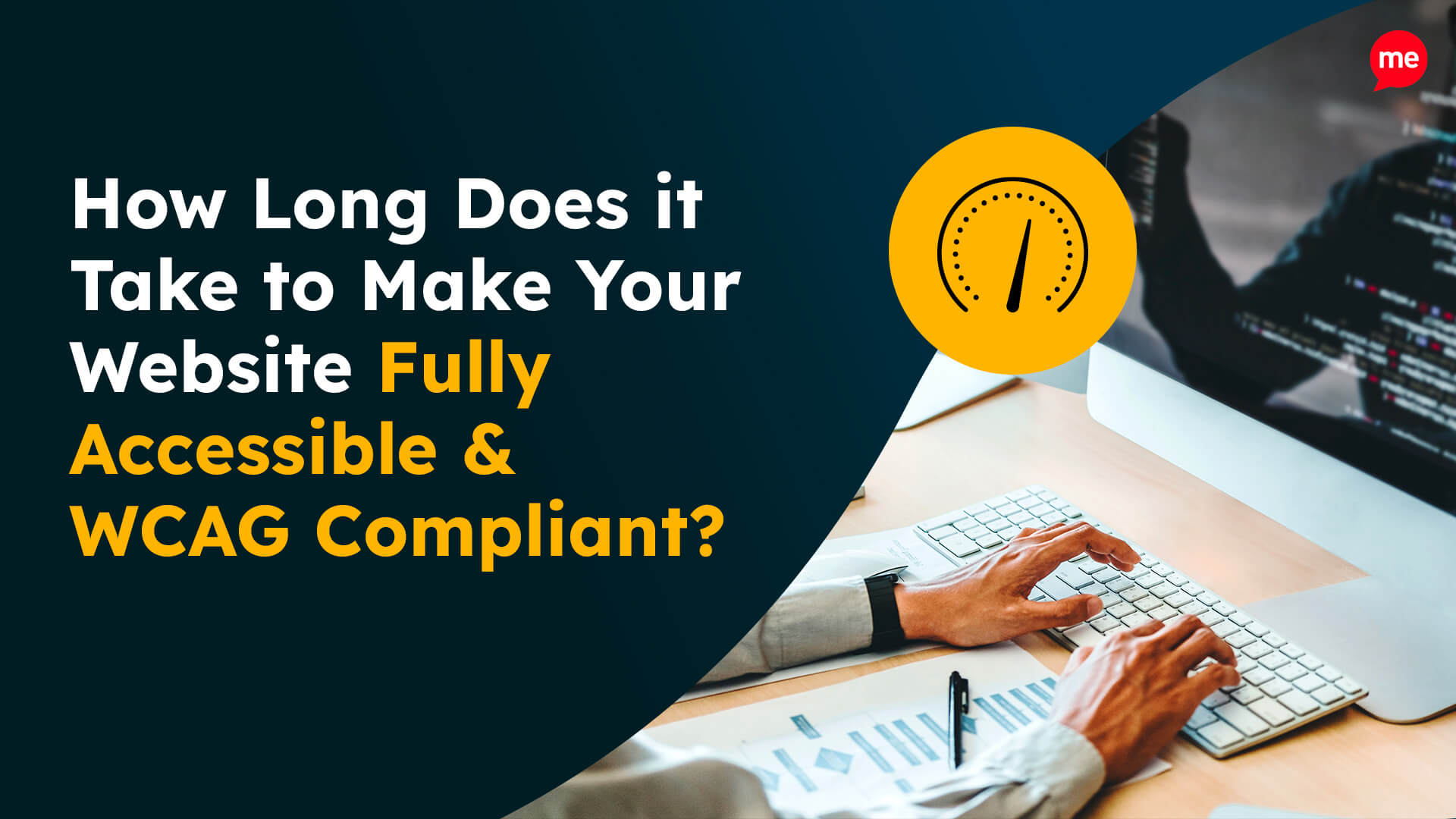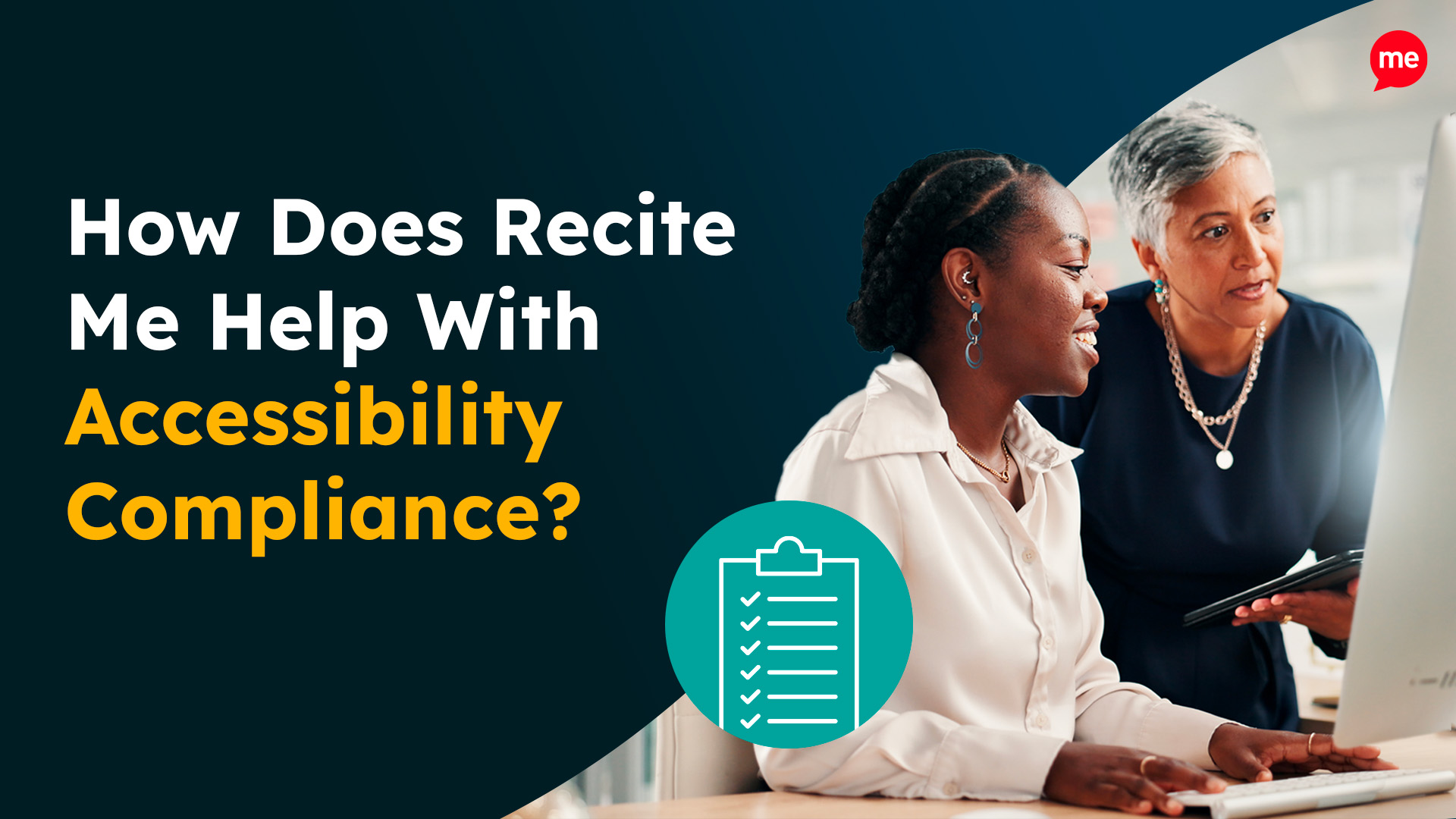On an individual level, the short answer is about 15% of the population. That equates to a pretty staggering number – over 13 million people in the UK, over 5 million people in Australia, and over 65 million in the US, for example.
The internet can be a minefield for those with access barriers. On any given website, an access barrier can be any element of the design or formatting that prevents users from reading and understanding the content.
The people who are most susceptible to access barriers are those who struggle with:
- Decreased vision
- Hearing Impairments
- Learning difficulties
- Literacy
- Language/linguistic problems
- Attention disorders
- Physical disabilities
Assistive technology provides solutions and support for all of these, making the online world more inclusive and an equal playing field for everyone.
So…Why Don’t ALL Companies Want to Provide Assistive Technology for Their Users?
A fair question, given the possibility of adding to your market share with millions of new website visitors and customers. No matter what sector your organisation sits in, ignoring 20% of the market is simply not good for business. Plus, there are other benefits to being inclusive, such as reduced legal risk and improved brand reputation.
The two most common objections we hear from prospective clients are that “Our site users don’t need it” or “Those who need it will have their own technology already”. Yet, we know from experience that neither of these statements is true.
Busting Accessibility Myths
The World Health Organisation (WHO) estimates that only 1 in 10 people have access to the assistive technology they need. For example, over 200 million people with low vision do not have access to assistive products to support them.
“Assistive technology enables people to live healthy, productive, independent, and dignified lives, and to participate in education, the labour market and civic life. Without assistive technology, people are often excluded, isolated, and locked into poverty, thereby increasing the impact of disability on a person, their family, and society.”
WHO, 2021
So, onwards to myth busting…
1. “Our Site Users Don’t Need It”
Wrong!
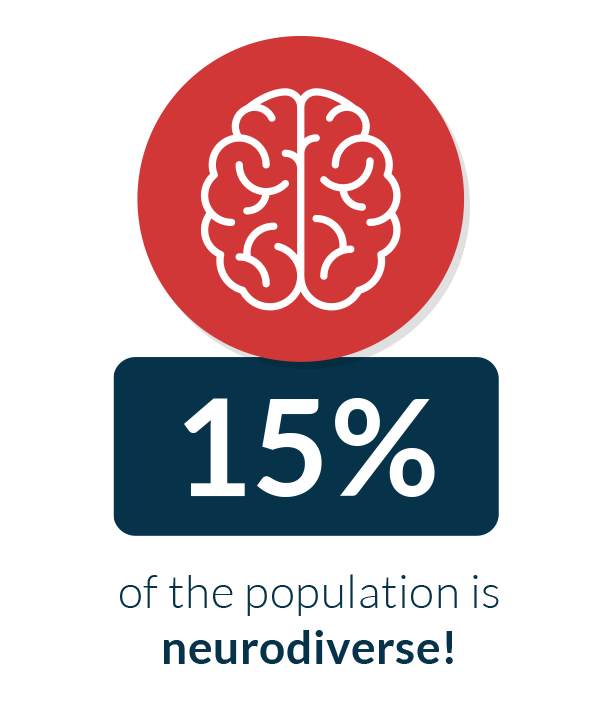 It’s a common reaction, mainly because many of the conditions that make websites inaccessible fall into the category of ‘hidden disabilities’. Often, these conditions are kept purposefully hidden for fear of drawing unwarranted attention or being discriminated against. This can be particularly true in the workplace environment.
It’s a common reaction, mainly because many of the conditions that make websites inaccessible fall into the category of ‘hidden disabilities’. Often, these conditions are kept purposefully hidden for fear of drawing unwarranted attention or being discriminated against. This can be particularly true in the workplace environment.
Did you know? … It’s estimated that at least 15% of the population is neurodiverse!
Let’s take dyspraxia as an example, as many people haven’t even heard of it. It’s a condition that affects around 10% of the population, and at least 3-4% in a significant way. So the chances are that within your website user base, there will absolutely be individuals with dyspraxia who need to be supported. The same can be said of Dyslexia, Hyperlexia, and a myriad of other unseen conditions that impact web accessibility.
So rest assured, your users DO need assistive technology!
A side note to employers: The average cost of adjusting for employee accessibility is typically just a few hundred pounds/dollars. Plus, data shows that employees with disabilities take less time off and tend to stay with companies for longer. So any outlay is almost certainly recouped many times over.
2. “Those Who Need It Will Have Their Own Technology Already”
Wrong again!
Put simply, if people were able to – and preferred to – use their own assistive technology, we wouldn’t have seen the incredible increase in subscription coupled with the phenomenal rise in usage of the Recite Me toolbar over the last calendar year:
Over 1.8 million unique users.
Over 10 million pages viewed with Recite Me enabled.
Over 47 million clicks on the Recite Me toolbar to use features like our screen reader, translation services, and styling features.
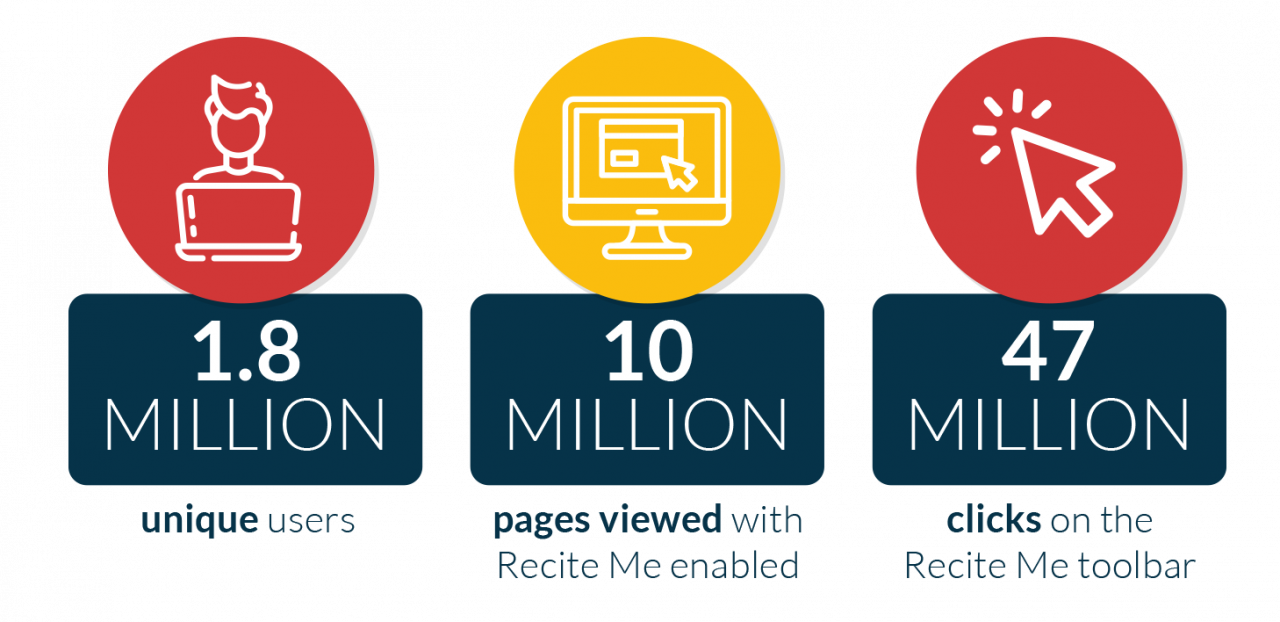
Website users are deterred from using personal assistive technology tools for many reasons, including:
Cost – Those with disabilities tend to be more financially vulnerable, and many simply can’t afford the technology. For example, a single copy of JAWS (a computer screen reader program that assists the visually impaired) costs over AUD1500 without updates. From an ethical standpoint, should someone with a disability have to pay out of their own pocket to get the same access to information, services, and employment as everyone else? That’s a hard no from us!
Usability – Individual assistive technology (such as JAWS) will work on only the device on which it is installed. With most people now moving between pc, mobile, and tablet devices regularly, this is incredibly restrictive.
Fun Fact: Recite Me began because our CEO, Ross Linnett, purchased assistive technology to help with his dyslexia, but was frustrated it would only work on one machine.
Functionality – Unlike most other assistive tools, Recite Me remembers each individual user’s preferences. So when they return to your site or any other site that hosts Recite Me, the toolbar will launch with personal preferences already installed, thus providing continuity of user experience.
Availability – Many internet users, especially older people, are simply unaware that solutions are available.
“I think I faced more challenges when I was younger, as there wasn’t the technology like today. I’ve just tried out the Recite Me toolbar to see how this would work for me, and it’s very easy to use. What I particularly like about it, is that I can scroll over text and the words are read back to me, also you can change the language to suit your needs – that really stands out for me because no website that I know of has this feature.
Michael McEwan, Freelance Journalist
What Kinds of Business is Recite Me Good for?
Every type of company and organisation can benefit from Recite Me assistive technology. We work with businesses across all sectors, including e-commerce, finance, public sector, technology, education, utilities, transport, leisure and entertainment, sports, recruitment, and construction.
Due to the very nature of our product, Recite Me is also very popular in the health and charity sectors. There are so many examples of people with disabilities reporting the vital need for assistive technology at a content level, that our technology has been assessed and tested by many disabled user groups before installment. As a result, we work directly with many disability-specific charities that have adopted our technology after gathering extensive user feedback. You can see a complete list of company testimonials here.
What Recite Me Users Say
One of our prospective clients commissioned Scope, a well-known disability charity, to carry out user testing on our toolbar. All participants said they would use the tool again and that they’d be more likely to use a website again if they knew that their accessibility needs were accommodated.
Here are some of the user comments and feedback…
“It doesn’t strain or hurt my eyes when I read now.”
“It’s remembered my settings across different sites, I really like this”
“It shows that they’ve given accessibility some thought, and that goes a long way with me.”
“Being able to change the background to black is a real bonus for me – I get dry eyes, so this extends the amount of time I can stay online.”
“If a place I’m planning to visit has an accessible website, I think they are more likely to be accessible when I get there.”
The Time for Accessibility is Now!
The demand for accessible and inclusive websites has never been greater, so goal-setting for inclusion should be at the top of your company’s to-do list. Adopting an inclusive approach to your online services before your competitors will solidify your position as a market leader – and improve profits, customer service, and employee satisfaction at the same time.
Recite Me is quick and easy to implement on your website and can usually be installed in under an hour. Join the hundreds of companies who have already adopted our inclusive software by contacting our team for more information, or by booking a toolbar demonstration.
Article Data Sources: United Nations, World Health Organisation (WHO), Australian Network on Disability, Learning Difficulties Australia, Australian Government Department of Health.
